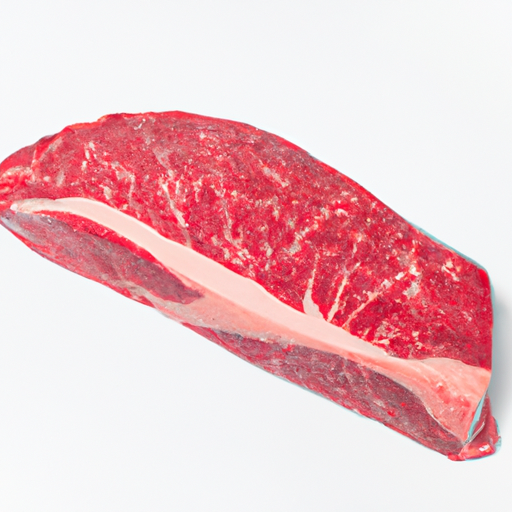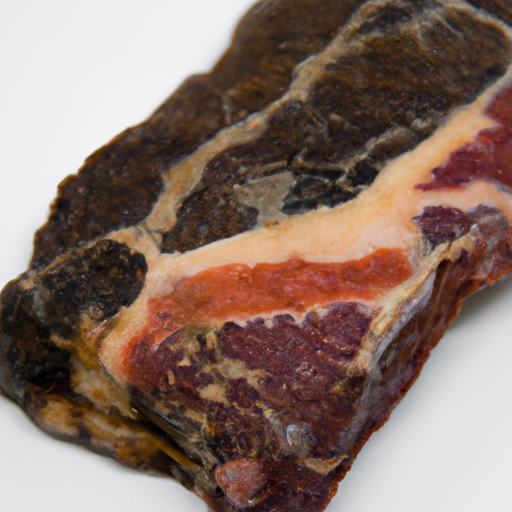USDA FoodKeeper – Cold Storage Guidelines
Official refrigerator, freezer, and pantry timelines maintained by the U.S. Department of Agriculture.
Visit USDA FoodKeeperIndulging in the luxurious melt-in-your-mouth quality of A5 Wagyu beef is truly a culinary experience worth savoring. To ensure you enjoy its rich flavors at their best, proper storage in the freezer is key, as it only stays fresh for three days. Remember, once it’s past that, it’s best to say goodbye for safety’s sake.
"According to USDA guidelines, A5 Wagyu Beef should be stored in the refrigerator at 40°F or below and used within 3-5 days of purchase to ensure food safety."


Freezer
-2 to 0°C (28 to 32°F)
Vacuum-sealed
3 days
Changes in color, slimy texture, unpleasant odor
Grilling, Sushi, Stir-fry
Prime Ribeye, Filet Mignon, Kobe Beef
A5 Wagyu Beef does not have a strict expiration date but its quality degrades over time due to oxidation and moisture loss. While it may still be safe to eat after the 'best by' date, the taste and texture might not be as exceptional as when fresh. Differentiating between safety and quality is crucial; if the meat smells off or shows signs of spoilage like discoloration or sliminess, it should be discarded.
To determine if A5 Wagyu Beef has gone bad, look for any changes in color, such as a dull or gray appearance, along with a strong off-putting odor. Additionally, if the meat feels slimy or sticky to the touch, it is best to discard it as these are signs of spoilage.
Consuming undercooked A5 Wagyu Beef poses risks of foodborne illnesses such as E. coli and Salmonella. To prevent such risks, ensure thorough cooking with an internal temperature of at least 145°F, and avoid cross-contamination by keeping raw meat separate from ready-to-eat foods. High-risk scenarios include improper storage, inadequate cooking, and using the same cutting board for raw and cooked meat without proper cleaning.
For optimal storage, wrap A5 Wagyu Beef tightly in plastic wrap or butcher paper to prevent air exposure and freezer burn. If freezing, divide the meat into portion-sized packages for convenient thawing. To maintain its quality, store the beef in the coldest part of the refrigerator or freezer. When thawing, do so in the refrigerator to retain moisture and avoid bacterial growth.
A5 Wagyu Beef originates from Japan and is renowned for its exquisite marbling and buttery texture. In Japanese culture, Wagyu is considered a delicacy and often served on special occasions. The rearing process, including the cattle's diet and environment, plays a significant role in the meat's quality. Interestingly, Wagyu beef is graded based on its marbling, color, and texture, with A5 being the highest grade.
A5 Wagyu Beef can be stored in the freezer for up to 6 months without significant quality loss. To maintain freshness, wrap it tightly in freezer-safe packaging to prevent freezer burn. Thaw in the refrigerator before cooking for best results.
If A5 Wagyu Beef has been refrigerated for 4 days, it is best to consume it within the recommended 3-day shelf life. After the expiration date, the quality may degrade, and there's an increased risk of spoilage. When in doubt, it's safer to discard it to prevent foodborne illness.
The type of packaging can impact the shelf life of A5 Wagyu Beef. Vacuum-sealed packaging helps extend the freshness by reducing exposure to air and preventing freezer burn. Ensure the packaging is airtight and freezer-safe for optimal storage conditions.
It is safe to store A5 Wagyu Beef next to other meats in the freezer as long as each item is properly sealed to prevent cross-contamination. Keep different types of meat separated to avoid any potential transfer of flavors or bacteria. Label packages to easily identify contents.
Cooking A5 Wagyu Beef can extend its shelf life by eliminating harmful bacteria. Once cooked, store leftovers promptly in the refrigerator and consume within 3 days for optimal quality. Avoid leaving cooked beef at room temperature for extended periods to prevent spoilage.
A5 Wagyu Beef typically has a similar shelf life in both winter and summer if stored correctly. However, higher temperatures in summer may increase the risk of bacterial growth, leading to quicker spoilage. Ensure proper refrigeration and storage practices regardless of the season.
When transporting A5 Wagyu Beef for a 3-hour journey, use a well-insulated cooler with ice packs to maintain a safe temperature below 40°F (4°C). Pack the beef securely to prevent leaks and cross-contamination with other foods. Upon arrival, refrigerate or freeze the beef promptly.
Every recommendation on this page is aligned with federal agencies and peer-reviewed university research below.
Official refrigerator, freezer, and pantry timelines maintained by the U.S. Department of Agriculture.
Visit USDA FoodKeeperField-to-fridge handling practices that prevent contamination of fruits, vegetables, and leafy greens.
Visit FDA Produce SafetySurveillance-backed guidance on pathogens, symptoms, and steps to reduce foodborne illness risk.
Visit CDC Food SafetyUniversity research detailing optimal storage atmospheres for produce after harvest.
Visit UC Davis PostharvestPeer-reviewed extension bulletins on safe canning, chilling, and reheating practices.
Visit Penn State ExtensionNeed deeper reading? Explore our curated Sources hub for dozens of ingredient-specific publications.
Scan your food directly and get instant safety info using our AI-powered camera feature.
Frozen Foods
View expiration date and storage guide →
Frozen Foods
View expiration date and storage guide →
Frozen Foods
View expiration date and storage guide →
Frozen Foods
View expiration date and storage guide →
Frozen Foods
View expiration date and storage guide →
Seafood
View expiration date and storage guide →
Seafood
View expiration date and storage guide →
Frozen Desserts
View expiration date and storage guide →
Seafood
View expiration date and storage guide →
Important: These are general guidelines based on authoritative sources listed above. Always use your best judgment and when in doubt, throw it out. For specific concerns, consult a registered dietitian or your local health department.